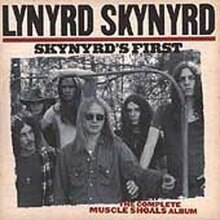
Lynyrd Skynyrd All Time Greatest Hits Zip
I'm trying to add IIS 6.0 to my WXP Prof system in order to start doing.NET development with web pages and I want a personal web server for testing. I keep getting this message: Windows XP Setup Setup could not copy one or more files. Install iis 51 xp without cd.
The 25 Greatest Lynyrd Skynyrd Songs of All Time. By Guitar World Staff 2018-08-23T20:08:40Z Magazine. Guitar World pays tribute to Southern rock legends Lynyrd Skynyrd by ranking their greatest tracks. Although Skynyrd had hits, those hits were always on their own sonic terms. Lynyrd Skynyrd - Pandora. If problems continue, try clearing browser cache and storage by clicking here.This will cause a logout.
Guitar World pays tribute to Southern rock legends Lynyrd Skynyrd by ranking their greatest tracks. “Honky Tonk Night Time Man” Street Survivors (1977) Like their take on JJ Cale’s “Call Me the Breeze” and Robert Johnson/Cream’s “Crossroads,” Lynyrd Skynyrd reimagined Merle Haggard’s “Honky Tonk Night Time Man” in an original fashion that stamped it as their own even while tipping their hat to a hero. “We did this song to show our love for Merle and for all country music,” says Gary Rossington.

And, like all of Street Survivors, the song was animated by Steve Gaines’ dynamic playing. “Steve played an incredible solo here and it was a live first take,” says Rossington.
“He only knew that it was a G progression and went out and played a mind-boggling solo. He didn’t even hardly know the song, but he played the shit out of it.
We were standing in the control room with our jaws dropped, and he strolled in and said, ‘How’d I do?’ We told him to go home and call it a day, because we knew it couldn’t get any better.”. “Whiskey Rock-a-Roller” Nuthin’ Fancy (1975) Skynyrd’s purest romantization of the musicians’ vagabond lifestyle—boozin’, cruisin’ and lady choosin’—was a vehicle for Ed King’s snapping Strat and Billy Powell’s straight-up Johnnie Johnson piano riffs. It’s a shot of basic rock and roll that resonated with the group’s hard-partying fans.
So no surprise that the song became a staple of concerts and ended up on side two of the pre-crash lineup’s only live album, albeit with Steve Gaines playing King’s parts. All three guitarists were Peavey endorsers at the time, as a glance at One More from the Road’s back cover amply displays. Gaines and Rossington both used the Peavey Mace, a versatile twin-speaker combo now long out of production, onstage. “Swamp Music” Second Helping (1974) Besides their Southern heritage, Skynyrd also shared a taste for harmonized guitar parts with the Allman Brothers. That’s on display in the chorus of this Ed King and Ronnie Van Zant number from the band’s hit-laden sophomore album, when King and Gary Rossington team up on a descending melody line that packs an extra hook into the chorus. King sets up the tune with his biting Strat tone, and Rossington delivers the guitar break with a little extra punch from his Les Paul.
Along the way Van Zant conjures an idyllic fantasy version of the rural South as an escape from big city life, name-dropping Delta blues icon Son House and pining for long days hunting with his coon hounds. Van Zant was an avid outdoorsman, so the sound of a yelping pack was likely music to his ears. “Comin’ Home” Skynyrd’s First andLast (1978) This is another track recorded during the band’s initial Muscle Shoals studio sessions of 1971-72, released posthumously on Skynyrd’s First andLast (and Skynyrd’s First: The Complete Muscle Shoals Album) as well as 1998’s The Essential Lynyrd Skynyrd. “Comin’ Home,” an original track written by Allen Collins and Ronnie Van Zant, displays more of a country/rock feeling than many of the harder, bluesier tunes recorded during these sessions, and displays the influence of west coast late Sixties rock bands like the Youngbloods and Quicksilver Messenger Service. Collins’ flat-picked arpeggiated guitar part has a fingerpicked, banjo-esque feel, embellished by country style piano fills. The classic harder-edged Skynyrd feel comes in right at the song’s powerful chorus section, accentuated by Rossington’s bluesy and melodic slide guitar licks.
The guitar solo section ramps things up a notch higher with a classic, high-energy Allen Collins solo, after which the song settles back into the quieter verse arrangement. “Was I Right or Wrong” Skynyrd’s First andLast “Was I Right or Wrong” is a song recorded during the band’s very first recording sessions in 1971-72 at Muscle Shoals Sound Studio in Alabama. The songs recorded during these sessions were first issued in September 1978, about a year after the October 1977 tragic plane crash, as Skynyrd’s First andLast, and later reissued in 1998 as Skynyrd’s First: The Complete Muscle Shoals Album. With guitars and bass tuned down one half, the primary rhythm guitar during the verse sections arpeggiates through the D5/D7-G5-C5 chord progression in steady 16th notes, over which Ronnie Van Zant sings a bluesy/Appalachian folk melody while guitarist Gary Rossington adds subtle slide guitar fills in standard tuning. The simple and plaintive feel of the music is reminiscent of one of the band’s biggest influences, the British band Free, which featured legendary guitar great Paul Kossoff. The song then kicks into another gear at 2:32, locking into a “Gimme Three Steps” type feel, featuring rhythm parts similar to the Rolling Stones’ “Can’t You Hear Me Knocking.” A demo of this tune is also included as a bonus track on the 1997 reissue of Second Helping, and the track was also subsequently included on the 1998 compilation, The Essential Lynyrd Skynyrd. “Don’t Ask Me No Questions” Second Helping Gary Rossington and Ronnie Van Zant wrote this song on a fishing trip—a getaway from the pressures of the band’s increasingly complicated business affairs.